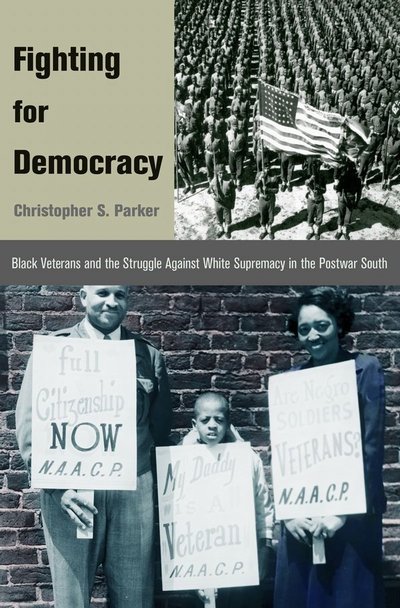November 3, 2009
Black veterans were vital in the civil rights fight, says book by University of Washington political science professor
When Robert F. Williams came home from World War II, he was ready to do the same things as his white counterparts: rejoin his family and make his way toward the American dream.
Serving in the military had shown Williams and black soldiers like him that they were effective fighters and that people in foreign countries respected them. It made such veterans willing to fight for civil rights at home.
Christopher Parker, an assistant professor of political science at the University of Washington, tells the story in his new book, “Fighting for Democracy: Black Veterans and the Struggle Against White Supremacy in the Postwar South.” Princeton University Press published the 288-page book Oct. 28.
“By virtue of their sacrifice, black veterans believed themselves — and the black community — to be entitled to first-class citizenship,” Parker writes in his introduction. “Since this wasn’t forthcoming, military experience gave them the confidence to take it.”
Black college students and members of the Rev. Martin Luther King Jr.’s circle eventually made nonviolent protest the operative norm among black civil rights organizers, but Parker shows how black veterans were an integral part of resisting Jim Crow laws and challenging white supremacy.
To delineate the road from military service to political activism, Parker tells stories of individual black veterans.
For example: 21-year-old Medgar Evers, fresh from serving in Europe, led a group of young black military veterans to vote in a Democratic primary July 2, 1946, in Decatur, Miss.
However, 20 armed white men stopped them. Evers and his group gathered arms of their own but came back to a white group much larger than theirs so eventually decided against a fight. (Evers would go on to become the first field secretary in Mississippi for the National Association for the Advancement of Colored People.)
A year later in Monroe, N.C., things were different. Williams and other black residents of the town pointed more than three dozen rifles at members of the Ku Klux Klan bent on desecrating the body of Benny Montgomery, a World War II veteran who had killed his white boss after the man attacked him. In that instance, Klan members decided against a fight.
Ten years later, Williams and members of the Monroe chapter of the NAACP defended the home of a chapter officer against a Klan attack.
These veterans, Parker says, had realized military service made them full members of the political community. They had also seen themselves as capable in the fight for democracy in Europe and the Far East, so why not at home as well? Along the way, they had also fought racist attitudes in the American military, gaining confidence and thus feeling entitled to equality. They believed in democracy more deeply than before, such that when they returned home to “whites only” bathrooms and seats at the back of the bus, they resolved to change American society.
As full members of a national military community, Parker says, “they insisted upon fighting for the rights they had earned.
To test his claims about postwar black veterans, Parker draws on data collected in the early 1960s for the Negro Political Participation Study. He determines that black veterans were far more likely than nonveterans to push for social change.
Doug McAdam, a sociology professor at Stanford University, endorses “Fighting for Democracy.” Rarely, he says, does a book change the way we see history. The canonical account of the civil rights movement says black college students and the black church took the lead. But Parker shows that black veterans of World War II and the Korean War played vital roles as well. “In doing so,” McAdam says, “he restores the veterans to their rightful place in the history of the struggle. Consider the canonical account revised.”
###
For more information, contact Parker at 206-543-2947 or csparker@uw.edu.
For a copy of the book, contact Sarah Caldwell at 609-258-9491 or Sarah_Caldwell@press.princeton.edu.

